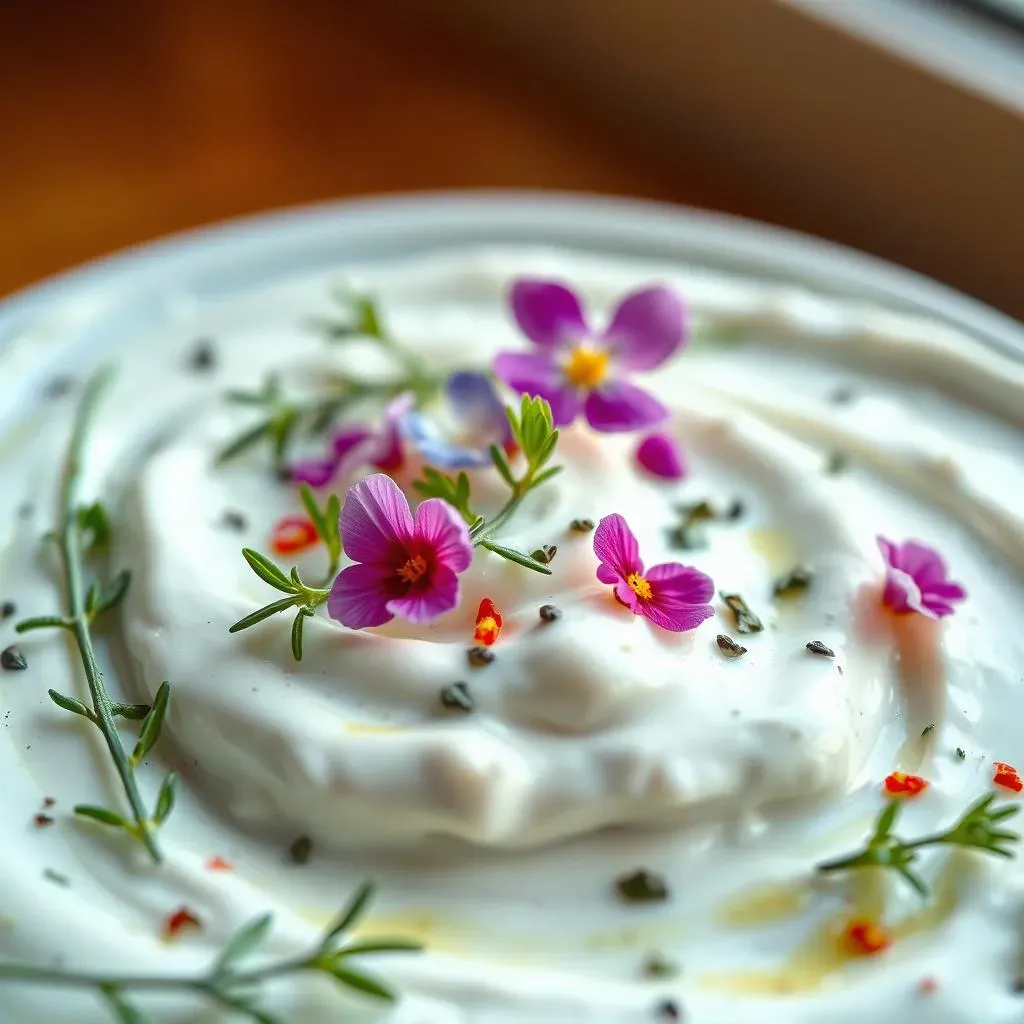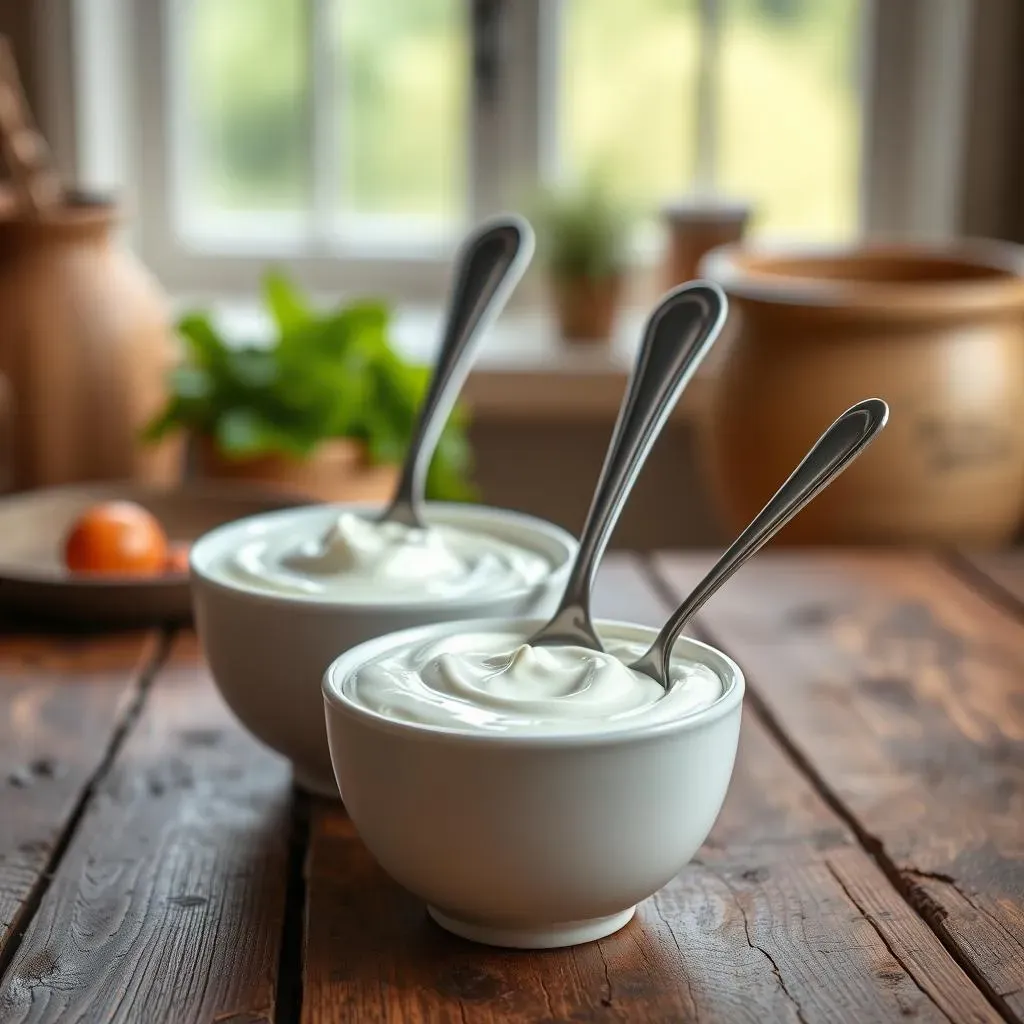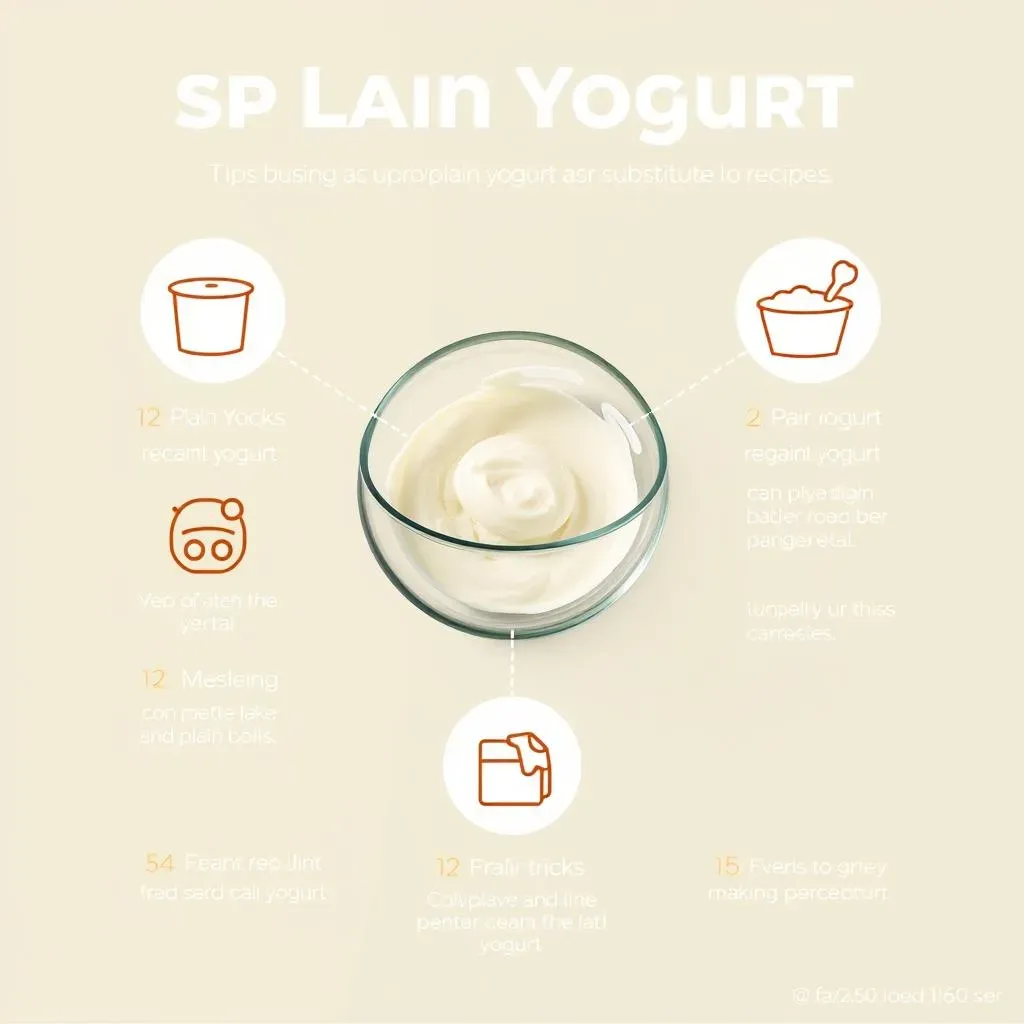Table of Contents
Ever found yourself mid-recipe, only to discover you’re out of sour cream? It's a kitchen pickle we've all faced. But, before you panic, know there's a simple, tangy solution lurking in your fridge: plain yogurt. Yes, that unassuming tub of creamy goodness can be your secret weapon. This isn't just about making do; it’s about discovering how to substitute plain yogurt for sour cream like a pro. We'll walk through why this swap works so well, the best types of yogurt to use (hint: Greek yogurt is a star), and some nifty tricks to make your dishes taste amazing. So, ditch the grocery run and let's get cooking with what you've got. Get ready to be amazed by how easily you can transform your recipes with this simple switch. We'll cover everything from simple swaps to recipe-specific tips, ensuring you'll never miss sour cream again.
Why Substitute Plain Yogurt for Sour Cream?

Why Substitute Plain Yogurt for Sour Cream?
so why would you even bother swapping out sour cream for plain yogurt? Well, for starters, it's a fantastic way to lighten things up. Sour cream is pretty heavy on the fat, while yogurt, especially Greek yogurt, packs a protein punch with less fat. This means you can enjoy your favorite creamy dips, sauces, and baked goods without that extra guilt. Plus, if you're like me and sometimes forget to buy sour cream at the store, yogurt is often a fridge staple, making it a lifesaver in a pinch. It's also about versatility; plain yogurt's subtle tanginess works well in both sweet and savory dishes, making it a flexible ingredient that can easily step in for sour cream. And let's not forget the health benefits, yogurt is a great source of probiotics, which are good for your gut. It's like a tiny upgrade to your dish, one spoonful at a time.
How to Substitute Plain Yogurt for Sour Cream: The Basics

How to Substitute Plain Yogurt for Sour Cream: The Basics
The 1:1 Rule
Alright, let's get down to brass tacks. The easiest part? It's a simple one-to-one swap. That means if your recipe calls for one cup of sour cream, you use one cup of plain yogurt. No complicated math, no fancy conversions, just a straight swap. This works for most recipes, whether you're whipping up a creamy pasta sauce, baking a cake, or making a killer dip. It's so straightforward, even I can't mess it up. This is your golden rule for a quick and easy substitution.
A Matter of Texture
while the 1:1 rule is your best friend, you might notice a slight difference in texture. Sour cream is usually thicker than regular plain yogurt. If your recipe needs that extra thickness, Greek yogurt is your go-to. It's much denser and will give you a result closer to sour cream. But if you only have regular plain yogurt, don't sweat it. You can thicken it up a bit by placing it in a cheesecloth or fine mesh sieve for a couple of hours. This will drain off some of the excess liquid, leaving you with a thicker consistency. It's a little extra step, but sometimes worth the effort.
Yogurt Type | Texture | Best Use |
|---|---|---|
Regular Plain Yogurt | Runny | Sauces, light baking |
Greek Yogurt | Thick | Dips, toppings, baking |
Taste and Adjustments
Now, let's talk flavor. Sour cream has that signature tang, which plain yogurt also has, but it can be a little milder. So, depending on the recipe, you might need to give it a little boost. A squeeze of lemon juice or a dash of vinegar can mimic the extra tang of sour cream. It's all about tasting as you go and tweaking it to your liking. And remember, when using yogurt in hot dishes, add it towards the end to avoid curdling. Nobody wants a lumpy sauce. A little patience and taste-testing will get you there.
Best Types of Yogurt to Substitute for Sour Cream

Best Types of Yogurt to Substitute for Sour Cream
Greek Yogurt: The Thick and Tangy Champion
Let's be real, Greek yogurt is the MVP when it comes to replacing sour cream. It’s naturally thicker and has a lovely tang that closely mirrors sour cream’s flavor profile. This makes it a superb choice for dips, toppings, and even baking. When I first tried using Greek yogurt in my potato salad, I was amazed at how similar it tasted to the original with sour cream—maybe even better! It’s the texture that really sells it, though. It's so dense that you won't miss the richness of sour cream, and the protein boost is a welcome bonus.
Regular Plain Yogurt: The Versatile Stand-In
Now, if Greek yogurt isn't what you've got on hand, no worries! Regular plain yogurt can absolutely step up to the plate. It’s more liquidy than Greek yogurt, so you might need to give it a little help with thickness, as I mentioned before. But its mild flavor makes it incredibly versatile. It works great in sauces, dressings, and as a lighter alternative in baked goods. I remember once I was making a cake and realized I was out of sour cream, regular plain yogurt saved the day! The cake was still moist and delicious, proving that a little creativity can go a long way. Just a quick tip: if you're using it in a hot dish, add it at the end to prevent it from separating.
Yogurt Type | Fat Content | Texture | Flavor |
|---|---|---|---|
Greek Yogurt | Variable (Full-fat, Low-fat, Non-fat) | Thick | Tangy |
Regular Plain Yogurt | Variable (Full-fat, Low-fat, Non-fat) | Runny | Mildly Tangy |
Full-Fat vs. Low-Fat: What's the Deal?
let's talk fat. You'll find both full-fat and low-fat versions of both Greek and regular plain yogurt. Full-fat will give you a richer, creamier result, which is ideal if you're aiming for that decadent sour cream vibe. Low-fat or non-fat options are fantastic if you're watching your fat intake, but they might be a bit thinner. I've found that full-fat Greek yogurt is the closest match to sour cream in terms of richness. However, low-fat versions still work well, especially if you're okay with a slightly lighter outcome. The choice really depends on your recipe and personal preference. Don't be afraid to experiment and see what you like best!
Using Plain Yogurt as a Substitute: Tips and Tricks

Using Plain Yogurt as a Substitute: Tips and Tricks
Baking with Yogurt: A Few Pointers
so you're ready to bake, but you're swapping sour cream for yogurt? Awesome! Here's the lowdown. First off, if the recipe calls for a lot of sour cream, like in a cake or muffins, consider using Greek yogurt for that added thickness. It'll help keep your baked goods nice and moist. Also, remember that yogurt can sometimes make things a tad more tangy, so you might want to balance it out with a little extra sweetness. I usually add a touch more sugar or honey, and that seems to do the trick. And here's a little secret: if you're worried about your batter being too thin, let it sit for a few minutes before baking. This gives the yogurt a chance to absorb some of the liquid.
Another thing I've noticed, is that when baking with yogurt, it's best to gently fold it into the batter, don't overmix it. Overmixing can develop the gluten in the flour, which can lead to a tough cake or muffins. Also, when you're using yogurt in recipes that have baking soda, the acidity of the yogurt will make the baking soda more active. So you might want to make sure that your batter is going in the oven quickly after the yogurt is mixed in to make sure that you get the best rise. I actually learned that the hard way, after my first batch of yogurt muffins came out flat as a pancake!
Sauces and Dips: Making it Creamy
Now, onto sauces and dips. When using yogurt in place of sour cream, the key is to add it at the end of cooking. High heat can cause yogurt to curdle, and nobody wants a lumpy sauce. Stir it in gently off the heat, and you'll get the creamy texture you're after. If you're making a cold dip, Greek yogurt is your best bet. It's thick and tangy and works wonders in dips like ranch or tzatziki. For a bit of extra flavor, I often add a squeeze of lemon juice or a dash of apple cider vinegar. It gives it that extra zing, similar to sour cream. Also, if you want a smoother dip, you can blend the yogurt with the other ingredients for a few seconds. It makes a world of difference.
One thing I always keep in mind when making dips with yogurt is to season it well. Yogurt is a bit more subtle than sour cream, so you'll want to add enough salt, pepper, and other spices to get a bold flavor. I actually like to let my dips sit in the fridge for a bit before serving. It allows the flavors to meld together and deepens the overall taste. And if your dip is too thick, you can always add a tablespoon of water or milk to thin it out to your liking. It’s all about experimenting and finding what works best for your taste buds.
Use Case | Tip | Why? |
|---|---|---|
Baking | Use Greek yogurt for thickness, add a touch more sweetener | Keeps baked goods moist, balances tang |
Sauces | Add yogurt off the heat, stir gently | Prevents curdling, maintains creamy texture |
Dips | Use Greek yogurt, season well, let it sit before serving | Enhances flavor, allows flavors to meld |
Wrapping Up Your Yogurt Swap
So, there you have it: substituting plain yogurt for sour cream is not only possible, but it's also a pretty smart kitchen move. Whether you're aiming to cut some calories, trying to use what you have on hand, or just prefer the tang of yogurt, this swap is incredibly versatile. From creamy dips to fluffy baked goods, plain yogurt steps up to the plate. With a little know-how and these tips, you'll be navigating your recipes like a pro. No need to fear the missing sour cream anymore, embrace the yogurt! Experiment, have fun, and enjoy the delicious results.